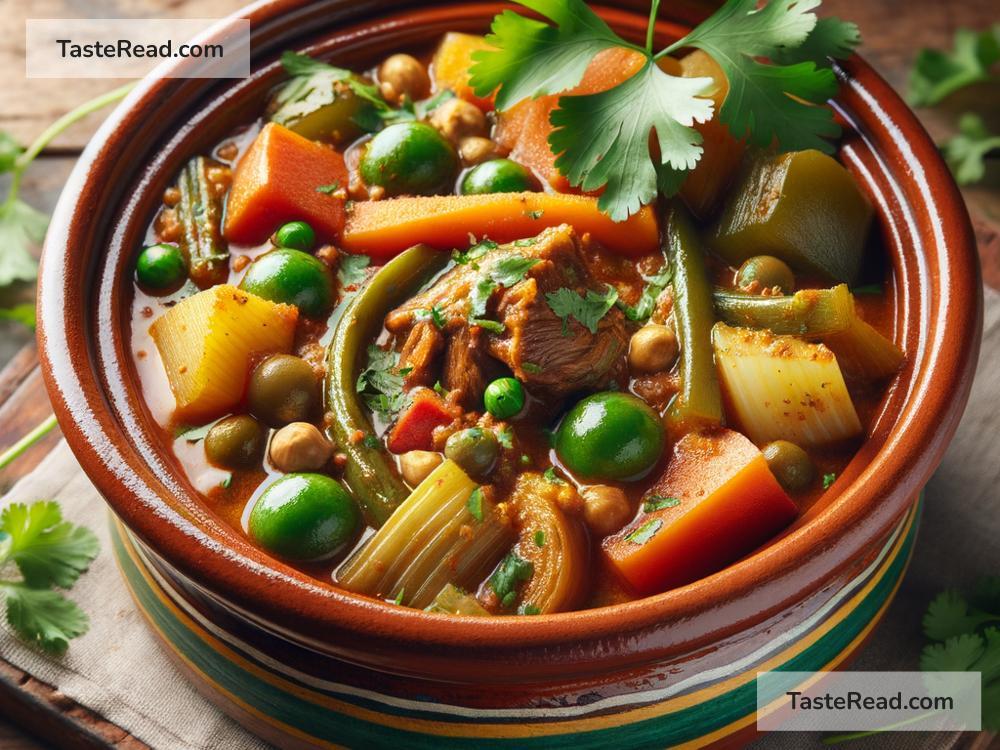Welcome to a delicious journey into the heart of Moroccan cuisine, where we’ll uncover the origins and wonders of one of their most famous dishes: the tagine. If you’ve ever wandered through the bustling souks of Marrakech or sat down to a meal in a Moroccan home, you’ve likely been greeted by the tantalizing aromas wafting from one of these distinctive pots. But what makes the tagine so special, and how did it come to be a staple in Moroccan households? Let’s dive in.
First off, the word “tagine” actually has two meanings: it refers both to the stew-like dish cooked within as well as the unique earthenware pot it’s prepared in. This pot is unmistakable; it consists of two parts: a flat, circular base where the ingredients are placed, and a large cone- or dome-shaped lid that sits on top. The design of the tagine pot is not just for show; it plays a crucial role in the cooking process. The shape of the lid helps condense the steam rising from the ingredients, returning the moisture back into the dish. This method of slow cooking is ancient, ensuring everything from meats to vegetables becomes tender, infused with flavors while conserving every drop of precious water.
Diving into history, the origins of the tagine can be traced back to the Harun al-Rashid era of the Islamic Empire, around the 8th century. Although the exact birthplace of the tagine is hard to pinpoint, it’s believed to have originated in North Africa, with Morocco, Algeria, and Tunisia all having rich traditions surrounding the dish. It’s a testament to the ingenuity of the people in this region, adapting their cooking methods to the resources available; the slow-cooking process suited the sparse fuel resources of North Africa perfectly.
Over the centuries, the tagine has become more than just a cooking vessel; it’s a symbol of Moroccan hospitality and culture. The dishes prepared in a tagine are vast and varied, reflecting the diverse ingredients and flavors of the region. From savory concoctions of lamb stewed with almond and apricot to chicken paired with olives and lemon, the tagine serves as a canvas for the rich tapestry of Moroccan cuisine. Not to forget the array of spices such as saffron, cumin, coriander, cinnamon, and ginger that define these dishes, offering up a sensational experience for the taste buds.
What’s particularly wonderful about tagine cooking is its communal aspect. Traditionally, the tagine is placed in the center of the table for everyone to share, fostering a sense of togetherness and family. It’s not just about feeding the body but nourishing the soul and strengthening bonds between friends and family.
Now, you might wonder, does one need a tagine to cook a tagine? While the traditional earthenware pots certainly add a touch of authenticity and perhaps a certain je ne sais quoi to the flavors, the slow, low heat cooking method can be replicated in other types of cookware. However, using a tagine pot adds an element of cultural appreciation and historical connection to the cooking process, bridging past and present.
In the West, the tagine has seen a surge in popularity as more people seek to explore international cuisines from the comfort of their homes. Fortunately, tagines are now more accessible, and many kitchenware stores or online retailers offer versions that are suitable for modern kitchens, including those that work on electric or gas stoves.
For those keen on delving into the world of Moroccan cooking, starting with a tagine dish could be a wonderful introduction. Simple to prepare yet rich in history and flavor, it invites you to slow down and savor each bite, each spice, offering a taste of Moroccan tradition that has been carried through the ages.
In conclusion, the Moroccan tagine is more than just a dish; it’s a cultural heritage, a vessel of history, and a delicious embodiment of Moroccan hospitality. Its origins, while rooted in the sands of time, continue to influence and inspire cooking not just in North Africa but across the globe. So, the next time you lift the lid off a tagine, remember you’re uncovering centuries of culinary tradition, each steamy breath a whisper from the past, inviting you to partake in a timeless culinary adventure.


